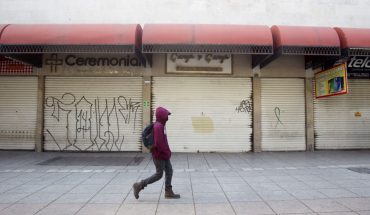Grooming refers to the sexual harassment of children and adolescents through digital media, usually by adults who seek to establish contact for sexual purposes. Faced with a global scenario of crisis that demands new responses in digital matters to promote a safe Internet in which adolescents live together, the construction of this document becomes of vital importance for Latin American families and communities. In addition to the meaning of the term grooming, and general guidelines, the guide contains:
The interpretation and identification of behavioral, emotional and educational indicators in potential victims.
Family cybersecurity tools for primary and secondary prevention.
Description of the incorporation of such conduct as a crime in the different legislations of Latin America.
Valid reporting resources and tools, such as Grooming Argentina’s innovative GAPP application, the first in the country and region, that allows real-time reporting.
General protection resources on Twitter, such as reporting support through its platform, and a glossary with the specific terminology used by the company.
“It’s very important for our organization to have the support of a company like Twitter. The commitment and responsibility that we knew how to co-build from the outset is reflected in the forcefulness of this guide. This will be a tool that will transcend throughout Latin America and an instrument of reference in families and in different communities, mainly in education, through the implementation of the development of competencies in digital education, “said Dr. Hernán Navarro, president of Grooming Argentina.For his part, Danya Centeno, representative of the Public Policies team of Twitter Hispanoamérica and security specialist, He said: “From Twitter we are committed to ensuring the safety of all those who use our platform. That is why from Twitter we have a series of rules aimed at creating a safe and free environment. Likewise, we continue to work on creating alliances with organizations such as Grooming Argentina, to work together for a healthier and safer conversation for people in the digital environment.” The term grooming is an Anglicism that translates into behaviors of rapprochement or grooming, being configured as a crime in different countries of the region. This process is executed by the harasser and consists of different stages, which may be replaced and / or alternated with each other and can take place for days, weeks, months and / or years, becoming a new modality of sexual abuse without physical contact against children and adolescents. The stages are known as follows:
Hooking stage or entrapment: it aims to gain trust and establish a bond of friendship. The bully approaches the adolescent usually by falsifying his identity and / or his age, through a conversation where the exchange of tastes, preferences and interests prevails.
Loyalty stage: the bully -knowing the tastes and interests of the adolescent- deepens the relationship, obtaining a greater amount of personal data. At this stage the bully will try to keep the attention captive by trying to retain the bond through the exchange of secrets, confidences, promises, etc.
Stage of seduction: the bully will seduce and sexualize the conversation, usually through questions and / or stories, to generate in the adolescent a commitment and / or emotional dependence.
Stage of sexual harassment: it is characterized by a marked sexual assault, implicit or explicit, in which the harasser manipulates the victim through the request for intimate images and / or videos, or the proposal of a personal encounter. In those cases in which the adolescent does not accede to their requirements, the harasser will exercise different forms of violence, such as: blackmail, extortion, threats or coercion.
This guide reflects the importance of Latin American societies and communities assuming an active commitment in the fight against this crime, and challenges, in turn, to promote actions focused on the prevention and protection of the rights of children and adolescents in digital environments.





